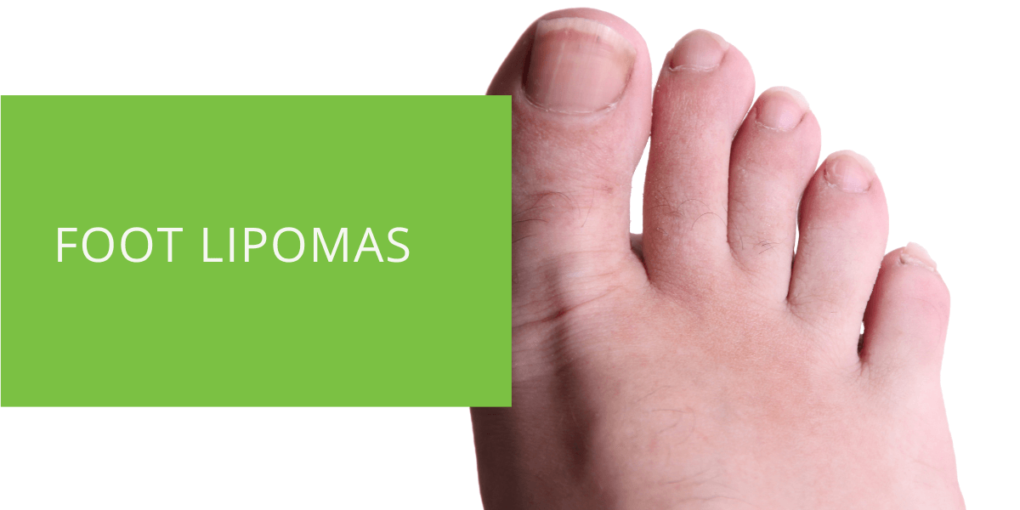Foot Lipomas: Symptoms, Causes & Treatment
Lipomas are benign tumors that are made up of fatty tissue. They are often referred to as fatty lumps or tumors and can occur anywhere on the body, including the foot. Lipomas on the foot can cause pain and discomfort, and it's important to understand the causes, symptoms, and treatment options available. This article will explore all aspects of foot lipomas and help you understand how to diagnose and prevent them.
What are Foot Lipomas?
Definition of Lipomas
A lipoma is a benign tumor that is made up of fatty tissue. It is a slow-growing lump that is usually painless and soft to the touch. Lipomas are typically small in size, but they can grow several inches in diameter.
Where Lipomas Can Appear on The Body
Lipomas can appear anywhere on the body, but they are most commonly found on the neck, shoulders, back, and trunk. Lipomas can also occur in the arms, legs, and even on the face.
Lipomas on The Foot
Lipomas on the foot are not as common as lipomas on other parts of the body, but they can occur. They are usually located on the top of the foot or the ankle, but they can also occur on the bottom of the foot. It's important to seek the help of a podiatrist if you suspect that you have a lipoma on your foot.

Symptoms of Foot Lipomas
Painless, Soft, Fatty Lumps
The most obvious symptom of a lipoma is a painless, soft, fatty lump. Lipomas are usually small in size and usually less than 2 inches in diameter. They feel like a ball-shaped lump that is moveable under the skin.
Tenderness or Discomfort
In some cases, lipomas can cause tenderness or discomfort when they are pressed or touched. This is more likely to happen if the lipoma is located in an area of the foot that is exposed to pressure or friction.
Size and Appearance
Lipomas are typically small in size, but they can grow several inches in diameter. They are usually round or oval and less than 2 inches in diameter. The color of a lipoma can vary, but they are typically the same color as the surrounding skin.

Causes of Foot Lipomas
Genetics
The cause of lipomas is not fully understood, but there is evidence to suggest that they run in families. Studies have shown a genetic component to the development of lipomas.
Age
Lipomas can occur at any age, but they are more common in people over 40.
Obesity
Obesity is a risk factor for the development of lipomas. People who are overweight or obese are more likely to develop lipomas than those who are healthy.
Diagnosis of Foot Lipomas
Physical Examination
A podiatrist can diagnose a lipoma on the foot through a physical examination. They will examine the lump and feel for any tenderness or discomfort. They may also ask about any family history of lipomas or other symptoms you may be experiencing.
Imaging Tests
In some cases, a podiatrist may order imaging tests such as an MRI or CT scan to confirm the diagnosis of a lipoma. These tests can also help determine the lipoma's size and location.
Biopsy
A biopsy may be ordered to confirm the diagnosis of a lipoma. A small tissue sample will be taken from the lump and examined under a microscope. This will help to determine if the lump is a lipoma or if it is a more serious condition, such as liposarcoma, a rare type of cancerous tumor made up of fatty tissue.

Treatment of Foot Lipomas
Observation
In many cases, a lipoma on the foot does not cause any problems and may not require treatment. A podiatrist may recommend observing the lipoma and monitoring any changes in size or symptoms.
Surgical Excision
If a lipoma on the foot is causing pain or discomfort or if it is growing in size, a podiatrist may recommend surgical excision. This involves removing the lipoma and the surrounding fatty tissue through an incision in the skin. This procedure is typically done on an outpatient basis and can be done under local anesthesia.
Complications and Risks
Surgical excision of a lipoma on the foot is considered safe, but there are some potential risks and complications. These include infection, bleeding, and the formation of a scar.

Prevention of Foot Lipomas
Maintain a Healthy Weight
Maintaining a healthy weight is the best way to prevent the development of lipomas. Being overweight or obese increases the risk of developing lipomas.
Exercise Regularly
Regular exercise can help to prevent the development of lipomas. Exercise can help to maintain a healthy weight and can also help to reduce stress and inflammation in the body.
Avoid Injury to The Foot
Injuries to the foot, such as strains or sprains, can increase the risk of developing lipomas. It is important to take care of your feet by wearing proper footwear and avoiding injuries.
Conclusion
Lipomas are benign tumors that are made up of fatty tissue. They can occur anywhere on the body, including the foot. Lipomas on the foot can cause pain and discomfort, and it's important to understand the causes, symptoms, and treatment options available. A podiatrist can help diagnose and treat a lipoma on the foot and prevent them by maintaining a healthy weight, exercising regularly, and avoiding injuries. Lipomas are benign tumors and usually do not cause pain, but in some cases, surgical excision may be required if they cause discomfort or grow in size.

